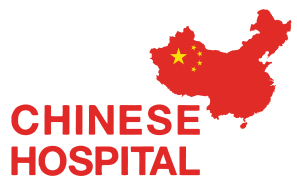Introduction
Type 1 diabetes is a chronic autoimmune condition in which the immune system attacks and destroys the insulin-producing beta cells of the pancreas. Traditionally, patients have relied on lifelong insulin injections to regulate their blood sugar. However, recent advances in stem cell therapy are offering new hope for long-term remission — or even a cure.
This article explores the latest clinical breakthroughs in stem cell therapy for Type 1 diabetes from Canada and the United States, and highlights earlier success stories from China. We also answer a key medical question:
Why do most patients need to take immunosuppressive drugs after receiving stem cell therapy?
Insulin-Free Living in Canada: A Clinical Milestone
In June 2024, a study published in the prestigious New England Journal of Medicine revealed that 10 out of 12 patients with Type 1 diabetes were able to stop insulin therapy for at least one year after receiving a single dose of lab-grown stem cells.
The stem cells were developed by Vertex Pharmaceuticals, a U.S.-based biotech firm. After being infused into the patients' livers, these cells matured into insulin-producing islet cells that could regulate blood glucose in real time and prevent life-threatening hypoglycemic episodes.
Amanda's Story
Amanda Smith, a 36-year-old nurse from London, Ontario (Canada), was one of the trial participants. Diagnosed at age 25, she had lived in constant fear of falling into a diabetic coma. Nearly two years post-treatment, she’s still insulin-free:
“Taking a couple of pills three times a day is nothing. I take them with meals. It’s easy. No comparison. And it’s a huge relief for my husband and my family.”
The United States: Pioneering Stem Cell Therapies for Diabetes
The U.S. plays a leading global role in diabetes cell therapy research. Biotech companies such as Vertex, ViaCyte, and Semma Therapeutics (acquired by Vertex) have partnered with top institutions like Harvard University and the Salk Institute to develop advanced islet cell replacement strategies.
U.S.-based research is exploring:
Immune-evasive islet cells made from iPSCs (induced pluripotent stem cells)
Encapsulation technologies that eliminate the need for immunosuppression
FDA-approved human trials for durable insulin independence
The therapy used in the Canadian study is part of a broader U.S.-led project, developed under the regulatory framework of the FDA, and showcases the global leadership of American biotech innovation.
China’s Early Adoption of Stem Cell Therapy for Diabetes
Before these Western advancements, China was among the first countries to apply stem cell therapy for diabetes in clinical settings. Hospitals and research centers in Beijing, Guangzhou, and Shanghai have tested mesenchymal stem cells (MSCs) — derived from bone marrow, fat, or umbilical cord tissue — to regenerate pancreatic function.
Reported benefits include:
Up to 60% reduction in insulin dependence
Improved blood glucose stability
Better overall quality of life
Many of these treatments used autologous stem cells, sourced from the patient, reducing the need for immune suppression. However, most Chinese trials did not fully eliminate insulin use, and long-term outcomes are still under evaluation.
Why Is Immunosuppression Required After Stem Cell Therapy?
A common question from patients is:
“If the cells come from my own body, why do I need to take immune-suppressing drugs?”
Here’s what science tells us:
1. Cellular Modification Can Trigger Immune Response
Even if cells are originally derived from the patient, lab-based expansion and genetic manipulation can alter their surface proteins. The immune system may detect them as foreign and mount a response.
2. Donor-Based Cells Are Often Used
In many therapies (including the Vertex trial), cells are derived from donors or universal lab lines. This means the body recognizes them as foreign, requiring immunosuppressive medication to prevent rejection.
3. Inflammation and Graft Reactions
Even autologous cells may cause localized inflammation or graft-versus-host-like reactions. Temporary immune suppression helps ensure graft survival and function.
4. Temporary Drug Use
In most protocols, immunosuppressive drugs are prescribed only during the early phase post-implantation. Once the immune system adapts, the dosage is reduced or stopped.
Conclusion
Stem cell therapy for Type 1 diabetes is transitioning from research labs to real-world clinical practice. The recent Canadian success — under a U.S. project — and previous Chinese experiences collectively show that insulin-free living is no longer a dream.
While challenges remain, especially regarding immune suppression, the future looks bright. Patients now have multiple international treatment options to explore — depending on their medical eligibility, financial capacity, and risk preferences.




